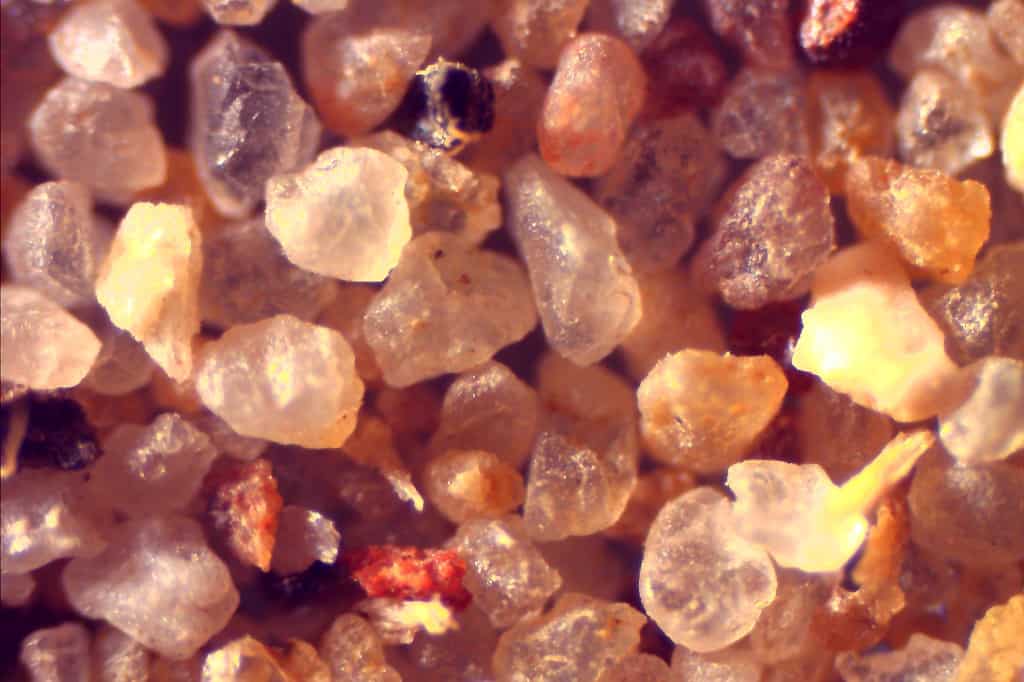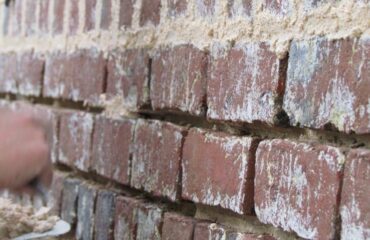Proper Ratio of Lime to Sand
We hear the question often, “What ratio of lime to sand should I use?” Our answer, “We don’t know what the void space of your sand is.” There are thousands and thousands of sands across the USA. Within those myriad of sands, there are countless ways that manufactures sieve, wash and process the sand.
One of our sayings at Lancaster Lime Works is “Sand is not Sand is not Sand.” The mason’s sand at your local masonry supply company will vary from load to load. It is of utmost importance to test the sand for our lime putty for: Void Space/Particle Size/Shape/Distribution.
Our lime putty is the best available. If you add too much or too little lime to your sand, product failure will be the result. We spend just as much time explaining and teaching about sand as we do about installation of lime putty mortars.
The Basics are Simple:
The void space between the sand is similar to the space between beach balls in a display bin. Between the beach balls there is room for soccer balls, between the soccer balls there is room for baseballs, between the baseballs there is room for marbles, between the marbles there is space for dust. This is the “void space.” Sand has the same.
Lime putty must fill the void space within the sand. Too much lime will push the sand particles apart; not enough lime will leave “holes” in the mortar, and both scenarios will leave you with a weak mortar, stucco or plaster.
Lime Mortars gain the majority of their strength from the sand and rely on the sharp pieces of sand making contact with each other and compacting firmly together. Lime develops a crystal structure that binds the already sharp, compacted and interlocking sand particles together.
Portland Cement based mortars are comparable to a two part epoxy glue, they gain the majority of their strength from the binder which is the Portland. The sand required for Portland cement is not nearly as important as it is for Lime Putty Mortars. This is because the Portland “glues” the sand together whereas a lime putty mortars rely on a sand that interlocks/packs together firmly. Lime putty mortar acts as a cushion between structural building stones or bricks. Where as Portland Cement mortar is a glue that holds the stones or bricks together. A popular decorative construction trend is “sticky stone” or “stone veneer”. These “stones” are all “glued” to a backing by Portland cement. It is common to see them fall from the backing and looking a mess.
The Correct Ratio:
The ratio of lime to sand is always variable. Specifications calling for such ratios of 1:2, 1:3 or 1:1 lime to sand are misleading, confusing and could be wrong. The lime:sand ratio will absolutely vary from sand to sand and from load to load. The correct ratio of lime:sand is determined by discovering the void space within the sand chosen for the project. Lime putty must fill the void space within the sand. Too much lime will push the sand particles apart, not enough lime will leave “holes” in the mortar. Both scenarios leave you with a weak mortar or plaster.
When mixing batches of lime mortar you can easily see the results of a correct ratio. If the ratio of lime to sand is 1:3 (one lime:three sand), dump three evenly filled buckets of sand into the mixer and one bucket of putty, totaling four buckets. Add too little lime and only three buckets of lime mortar come out of the mixer. The putty just fills the space between the sand.
All masons should have the skills to determine the void space within the sand. They need to prove and explain to architects and engineers the correct amount of lime for the chosen sand.
The testing method of finding the void space between the particles of sand is relatively simple. It is very important to prevent mortar failure and obtain a strong lime mortar.
Lancaster Lime Works provides the training and resources to mason’s and architects in all historic mortars. Please contact us with questions.


Good morning. I am in the process of chinking 150-year-old cabin and I was wondering if a 1 to 3 ratio would be the correct ratio for this project? Most of the timbers are original but some where replaced and are green. Thank you for your time.
Delayne Hodges
Thank you for your question! There are a lot of factors that go into making a lime putty mortar. One very important factor is the type of sand. Could we schedule a time to talk about your project? If you could text a few pictures to our business cell phone, we’d be happy to help you through your restoration. 717-207-7014. Thank you!